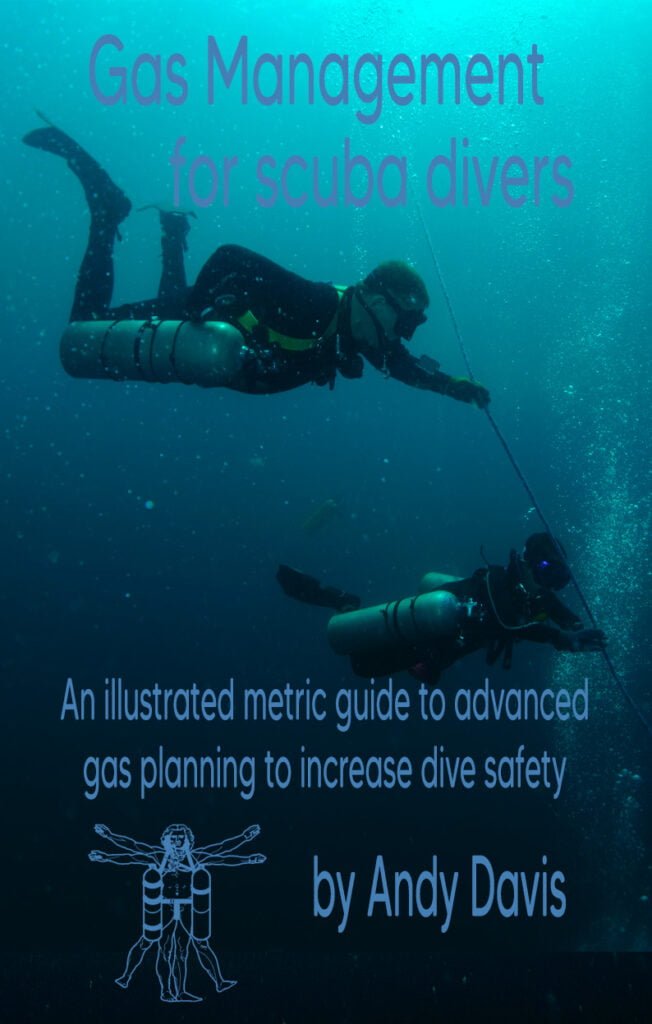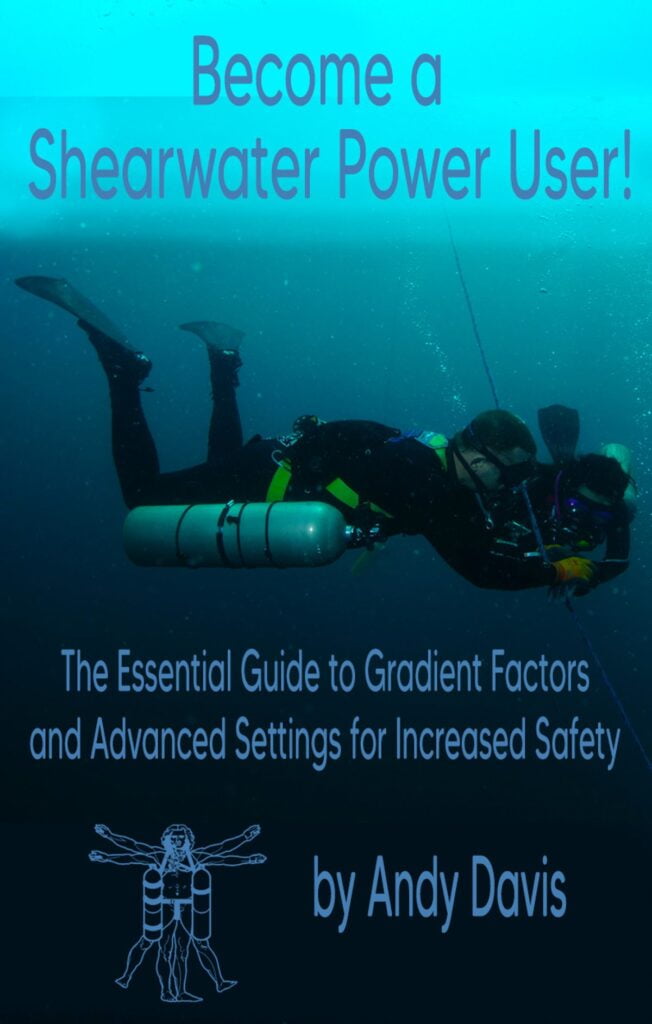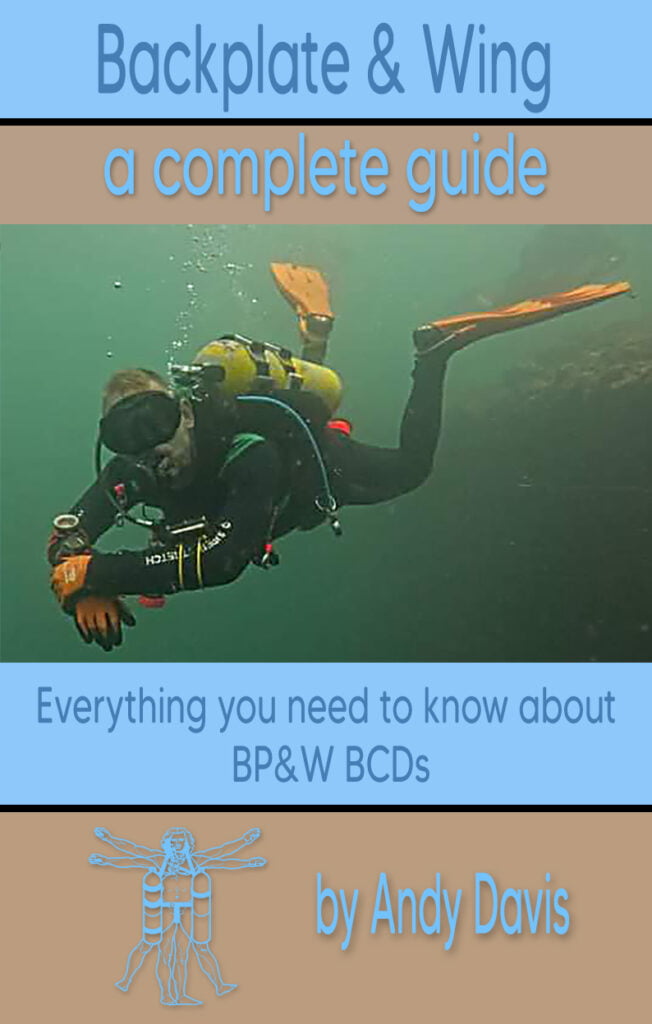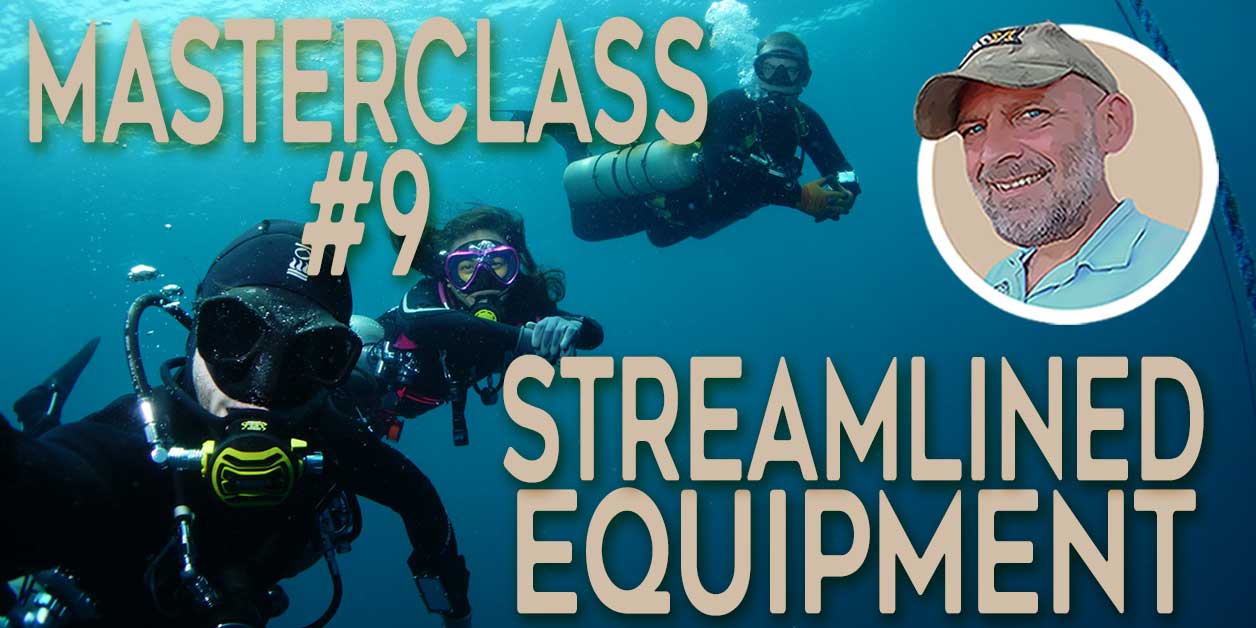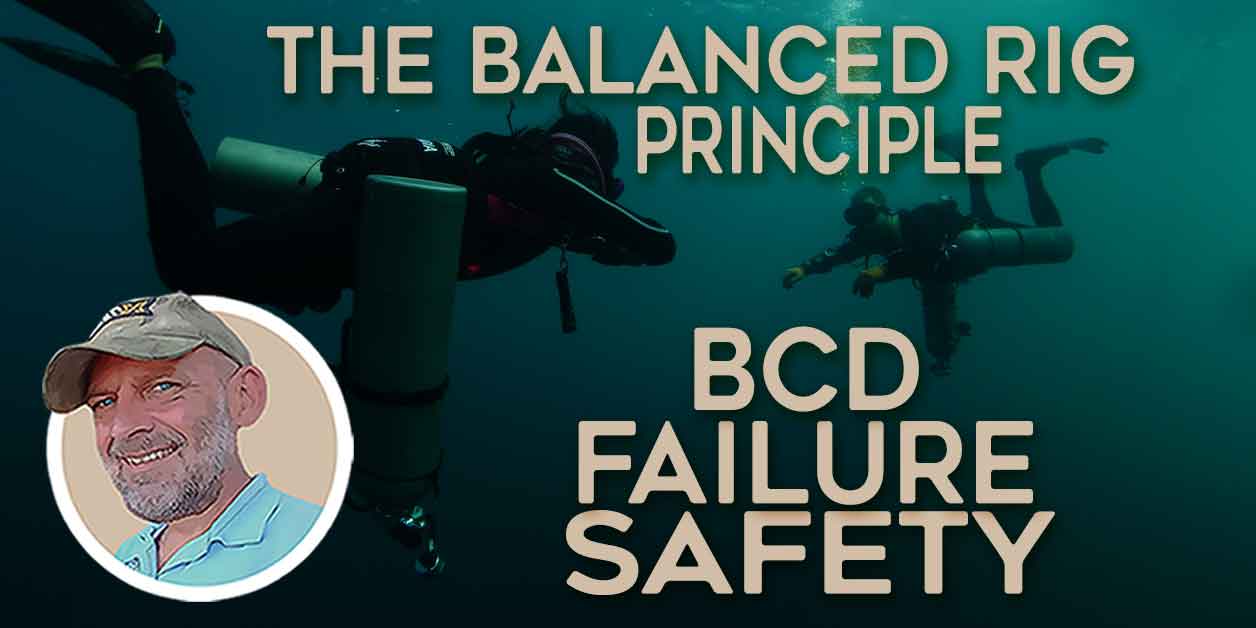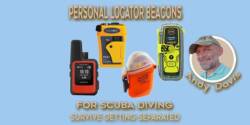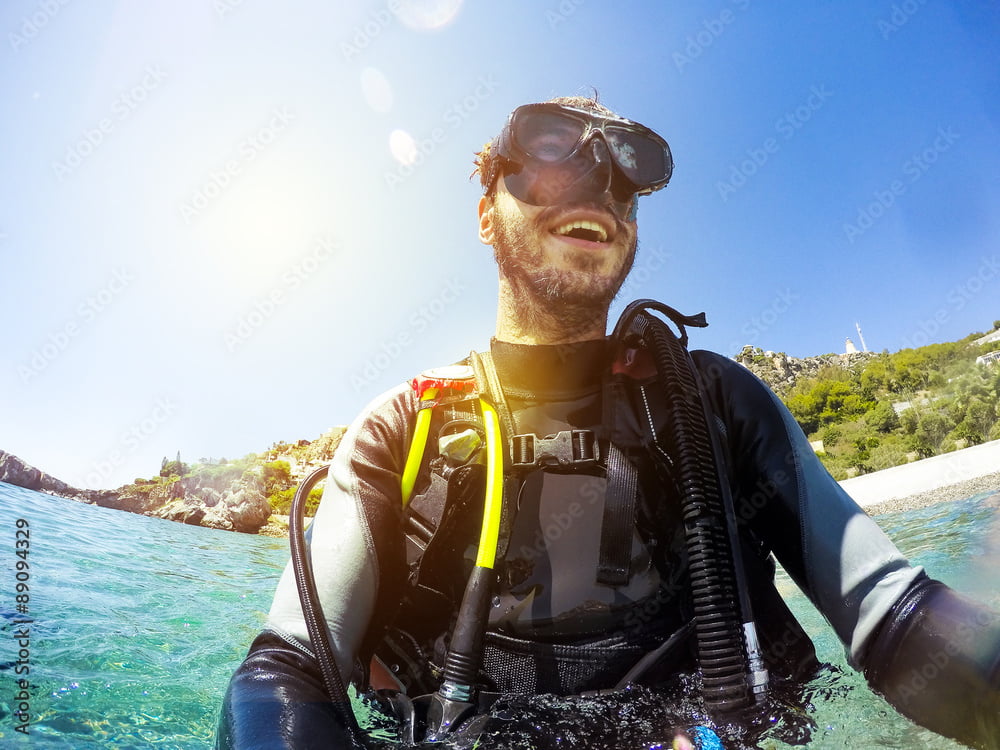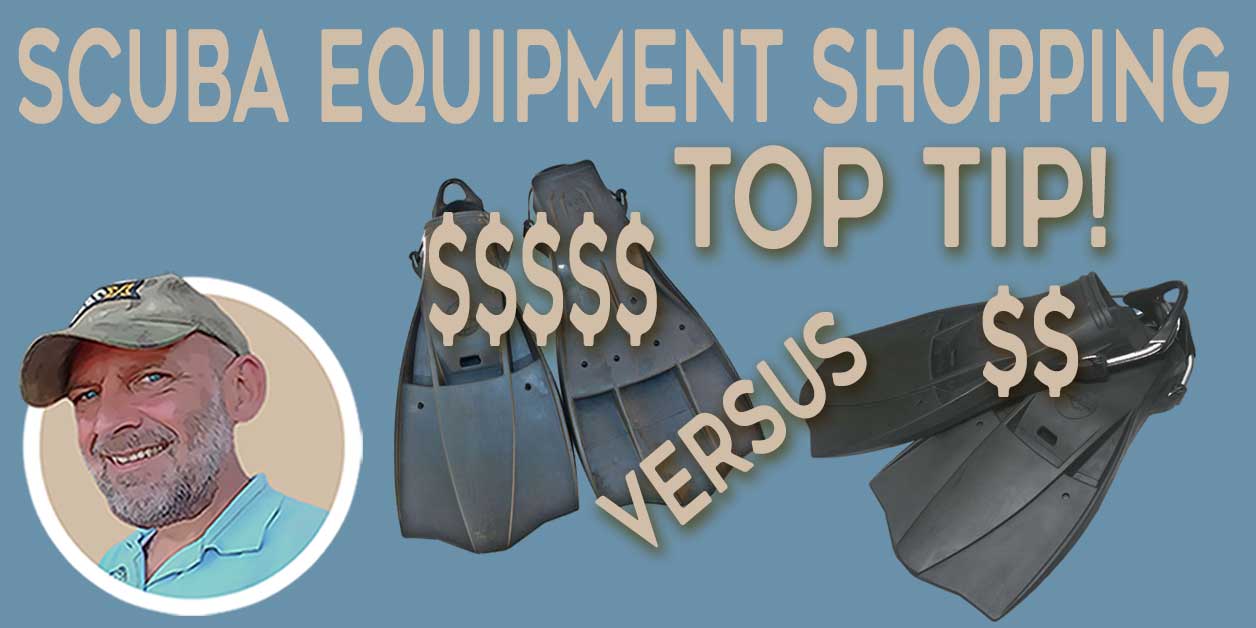Pro Tips For Choosing The Best Scuba Diving BCD For Your Needs
Buying your own dive gear is awesome and exciting. However, it is easy to make mistakes and buy diving equipment you later regret. Your scuba diving BCD is a really important purchase. It has a huge impact on your comfort and security when diving. With so many BCD options on the market, how do you go about deciding which one is best for your needs?
In this article, I will describe the different functions and features found in scuba diving BCDs. Furthermore, I will give honest insider advice on how to make a BCD purchase you won’t regret later.
Scuba diving BCDs come with a huge variety of features and functions. Often, BCD designs include unnecessary features just to make them stand out in a competitive market. For that reason, it is important to know what is useful, and what is gimmicky. Dive gear manufacturers and retailers will always want to sell you more than you need.
Making the best purchase decision can be difficult if you are not sufficiently experienced to know what you need. Likewise, it can be difficult to understand the pros and cons of various designs if you have never tried using them. This article aims to help you with that.
Tips on buying a scuba diving BCD
There are many scuba diving BCDs on the market. Each one claims to be the best. Also, there are so many confusing terms for the BCD features.
Scuba diving BCD manufacturers don’t help
Scuba diving BCD manufacturers seem to like complicating your task of choosing the best option. As a result, BCD advertising can be very confusing for divers.
Quite often, dive gear manufacturers try to sell higher-priced BCDs adding superfluous functionality and complexity to their basic designs. As a result, they use all sorts of flashy acronyms and buzzwords. If you feel confused, don’t worry – it’s all nonsense.
The difference between a $200 BCD and a $600 scuba diving BCD is often nothing more than the addition of numerous gimmick features that the diver will never use. Quite often, those gimmick features can actually detract from the performance of the buoyancy control device.
Unnecessary scuba diving BCD features
For instance, unnecessary features can add to the weight and positive buoyancy of a BCD. Likewise, they can reduce streamlining and ease of operation. Also, adding more components increases the chance of something breaking.
Thus, the more complex a BCD design is, the more likelihood exists that it will let you down at some point.
Gimmicky BCD advertising stresses how many features a buoyancy control device has. It is wrong to assume that more features is better. Don’t forget that you have to pay for every inch of fabric, strap, quick-release buckle, and a strip of Velcro on a BCD.
Critically evaluate scuba diving BCD design
Look critically at a BCD design and ask the following questions:
- Is that feature really necessary?
- Will that design be easy to use?
- Has the manufacturer added more than necessary?
- Are these features innovative, or are these just nonsensical acronyms?
Additionally, try to classify scuba diving BCD features into the following categories:
- It serves a functional purpose
- It was added to raise the BCD price
Decide what BCD functionality you want
Take the time to decide what features and functions you want. Do this before looking at adverts which will try to put ideas in your mind. Also, try to maintain a skeptical and questioning mindset. As a result, you won’t be hoodwinked.
Consider where you get purchasing advice from
Be aware of vested interests when you seek advice about purchasing a scuba diving BCD. Many dive shops are financially incentivized to sell you specific equipment. Additionally, many dive shops are constrained by dealer network contracts.
As a result, they cannot offer you a wide range of choices. Neither will they suggest a better alternative if it isn’t from their affiliated dive gear manufacturer. Likewise, dive shop staff and instructors will earn higher commissions from selling you higher-priced options.
It is ideal to compare as many BCD models and brands as you can. So, be prepared to shop around at different dive gear retailers.
Use the Internet for BCD shopping research
There are lots of dive gear reviews online. As a result, you can get differing opinions on which scuba diving BCD is best. Similarly, you can ask for advice on scuba diving social media groups. However, you need to be realistic about who is giving you an opinion.
When you are reading scuba diving BCD reviews online, be wary about bias. Some diving magazines and dive gear reviewers receive financial incentives from manufacturers. For example, magazines tend to promote products for manufacturers that pay for advertising.
Consequently, what is suggested as an impartial review can be nothing more than a manufacturer-sponsored advert! Again, remain skeptical.
Online scuba community forums are a good place to seek advice. The opinions you receive are likely to be far less biased. However, it is also important to bear in mind how experienced divers are when they offer opinions.
Often, scuba divers suggest what they own, but they have never tried any alternatives. Additionally, some divers get very ego invested in their dive gear. As a result, they may project praise for a BCD that isn’t particularly good. Occasionally, that can be a result of the sunk cost fallacy.
A guide to selecting the best scuba diving BCD
With those words of warning in mind, here is my unbiased, guide to selecting the best scuba diving BCD for your needs.
Surface Flotation
The BCD should offer sufficient buoyancy to float you on the surface with all of your gear in place. The exact amount of buoyancy needed to do that is specific to the diver and the equipment they use.
Excess buoyancy from an oversized BCD bladder makes you less stable underwater.
Variable Buoyancy Underwater
The purpose of a BCD is in its name: Buoyancy Control Device (or Buoyancy Compensating Device). As such it should provide variable buoyancy underwater so you can remain neutrally buoyant.
A properly weighted diver should not require a large amount of buoyancy compensation. For this reason, it is important to understand your buoyancy requirements when investigating BCD lift capacity.
Cold water divers, in thick neoprene, suffer the largest loss of buoyancy from exposure suit compression on the descent. Combined with heavy steel cylinders, this can mean a larger capacity BCD is required.
In contrast, warm water divers using thin wetsuits and aluminum cylinders require only a negligible amount of buoyancy compensation.
Securing the scuba cylinder to the diver
The BCD must offer a secure method of attaching the scuba cylinder to the diver. Importantly, the cylinder should not slip or move within that attachment.
Typically, BCDs use cam-bands to secure cylinders. As a result, cylinders sometimes slip out of the cam band. Some scuba diving BCDs are sold with two cam bands. This is a useful feature and improves diver safety.
BCD harness comfort
It is important that your scuba diving BCD fits comfortably and securely. At a minimum, it should include shoulder straps and a waistband.
Additionally, some BCDs incorporate crotch straps. These are ideal because they prevent you from sinking down inside the BCD when floating upright. The BCD straps may have adjustable quick-release buckles to enable a varied fit.
Ensure that these are robust and reliable. ‘Jacket-style’ BCDs usually include a wide velcro waistband.
Jacket style BCDs
Jacket-style BCDs feature a bladder runs that wraps around the diver. They are typically used in open-water classes, which makes them a familiar option for the novice diver.
The drawback with jacket-style BCDs is that the fit changes as you add or remove air from the BCD. Consequently, they are tight and constricting when inflated. Or, they are loose and unstable when deflated.
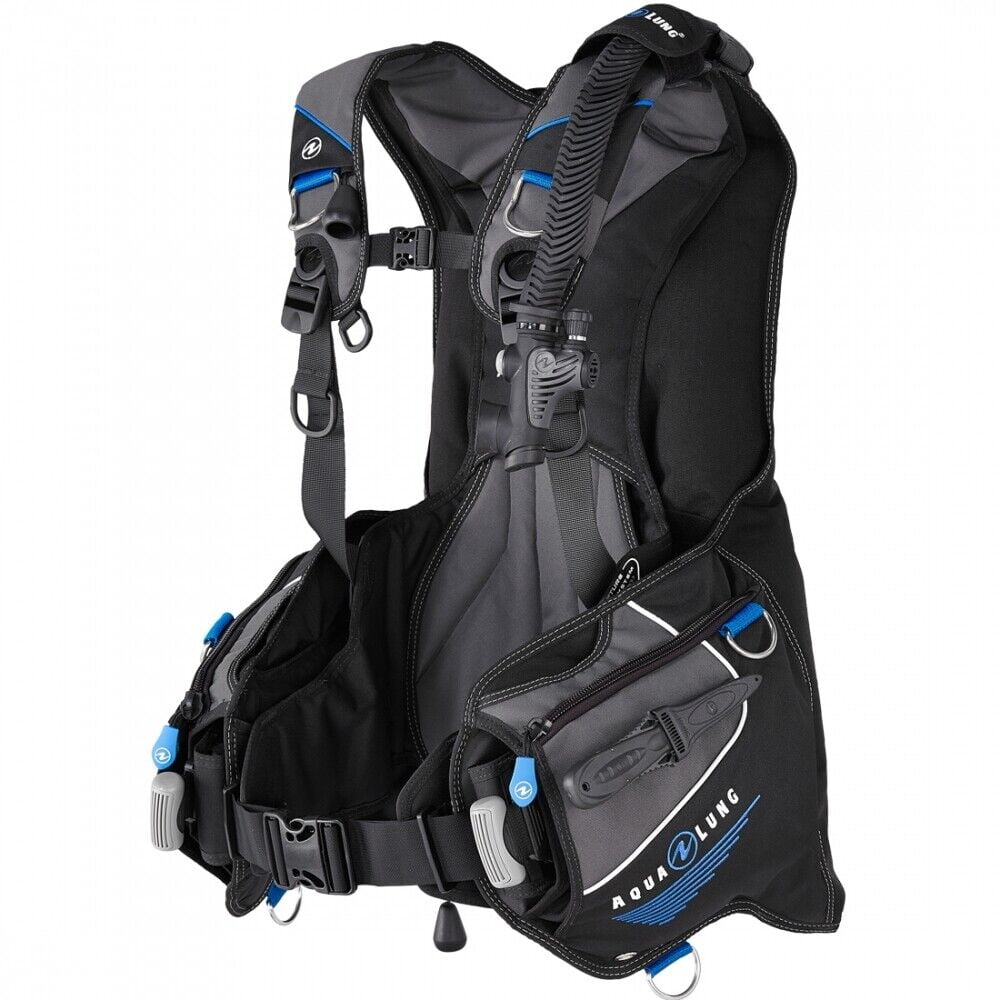
Wing style BCDs
Wing style, or rear-inflate, BCDs keep the bladder behind the diver. As a result, they don’t constantly change in fit like Jacket style BCDs do. They typically have a similar design of adjustable harness to jacket BCDs. As a result, beginner divers will still find themselves familiar with the BCD they used in training.
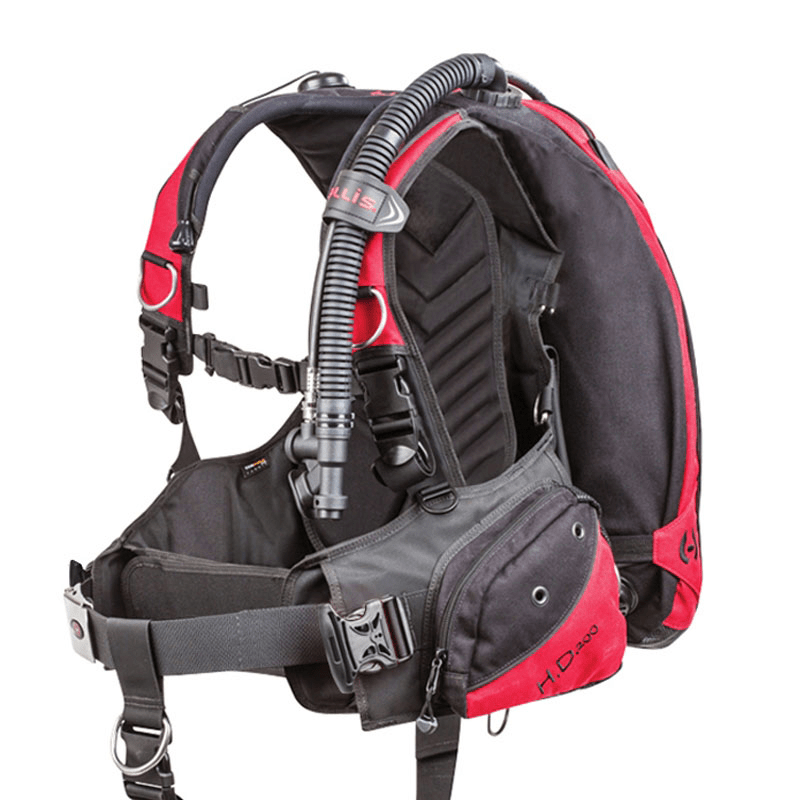
Backplate and Wing BCDs
Backplate and wing (BP&W) BCDs are a sub-class of wing-style BCDs. They have a modular construction based on a rugged backplate, a webbing harness, and a wing bladder at the rear.
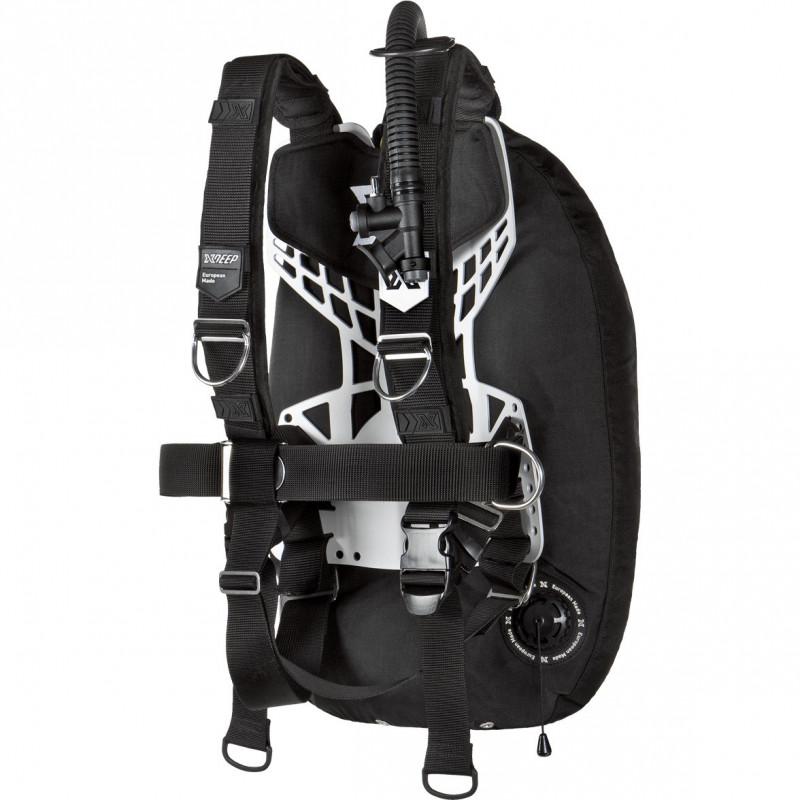
When buying a backplate and wing-style BCD, you can choose between:
- Steel, aluminum, carbon fiber and plastic backplates
- Different cam-band options
- Minimalist or adjustable harness
- Different wing sizes (tropical, warm, and cold water)
A crotch strap is typically seen as an essential add-on, as this ensures the security and fit of the harness. The use of a plain webbing-style harness enables the user to add ancillary and storage options as they desire, including pockets, knife sheaths, etc.
Backplate and wing BCDs are very popular with divers who enjoy a minimalist (less is more) configuration. Additionally, these BCDs are appealing because the modular design allows individual customization. In short, you can choose exactly what you need.
The use of metal backplates reduces the need to carry weights on a weight belt, In turn, this helps encourage instinctive horizontal trim by spreading the weight across the length of the diver’s torso.
Backplate and wing BCDs are very popular with divers who enjoy a minimalist (less is more) configuration. Additionally, these BCDs are appealing because the modular design allows individual customization. In short, you can choose exactly what you need.
The use of metal backplates reduces the need to carry weights on a weight belt, In turn, this helps enable horizontal trim by spreading weight across the length of the diver’s torso.
Also, backplate and wing-style BCDs are more streamlined and less bulky. However, the drawback to these BCDs is that the diver must pay more attention to setting up the BCD. As such, they are less convenient when first purchased.
Scuba diving BCD features
Low-pressure inflators
Every BCD utilizes a Low-Pressure Inflator (LPI) to add air into the bladder. Typically this is on the end of a corrugated hose attached to the left shoulder of the BCD.
However, some BCDs use more complicated methods with ‘remote’ inflators incorporated into the body of the BCD. These are invariably more failure prone and less intuitive to control. As such, I would classify them as a gimmick feature.
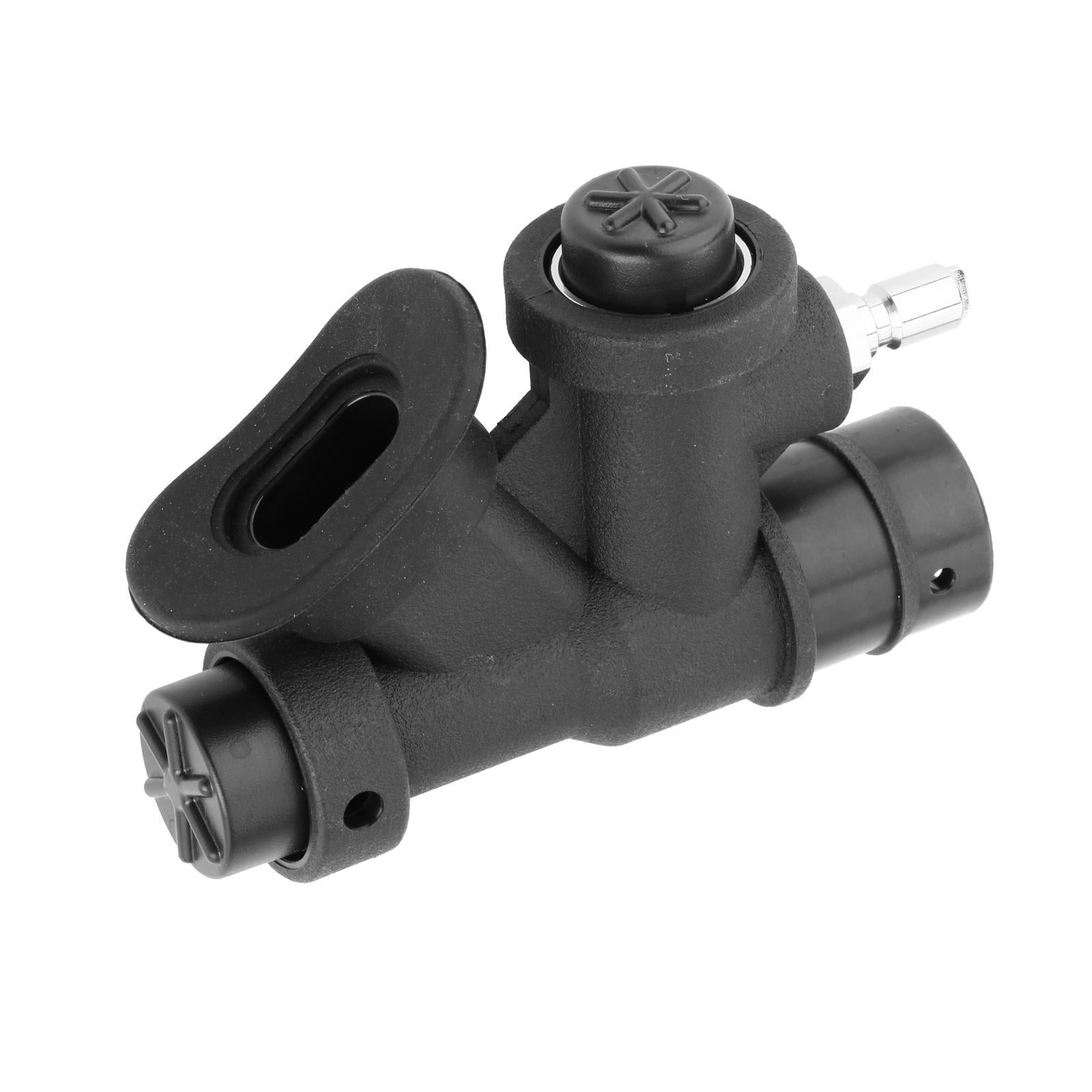
Low-pressure inflators can vary in performance. Some promise faster inflation. However, do bear in mind that “high power inflators” only make your job of finely controlling buoyancy harder.
Whilst a quicker low-pressure inflator may seem attractive (and is often marketed by BCD manufacturers as such) it is usually not what you want unless you are technical diving.
Bear in mind the design of the LPI. It should be something you can use easily and without confusion. The K-style LPI is very popular and straightforward. Sadly, there are some very strange LPI designs on the market. When you are inspecting a BCD, close your eyes and see how intuitive the LPI feels in your hand.
The length of the LPI corrugated hose should also be considered. Some divers find the standard length hose is too long and dangles below them. For that reason, some BCDs offer shorter-length corrugated hoses.
BCD dump valves
The BCD must have methods to vent air from the bladder. Firstly, the LPI module will normally have a dump button for releasing air.
In order for this to be used, the LPI corrugated hose must be raised above the level of the BCD bladder, typically with the diver in a vertical orientation in the water. Check that the buoyancy control device design does not limit your ability to raise the LPI hose to access this feature.
Secondly, the BCD will have one, or more, dump-valves that offer alternative methods of deflation. The location of these is important for venting air if the diver is not in a vertical orientation.
BCD dump valves located near the kidneys are especially useful if you intend to dive in horizontal trim.
As a minimum, the BCD should have a dump valve at the lower/bottom area of the BCD for deflation when in a horizontal or head-down orientation. Dump valves also allow a more rapid deflation, should circumstances require it (i.e. uncontrolled ascent).
BCD Pockets
Most BCDs have pockets for storing small items of gear carried during dives. These can be an ideal way of storing items in a streamlined manner.
Streamlining your kit reduces exertion in the water and helps prevent entanglements. Most BCDs offer some form of pockets, but many of these are not of suitable size for actually storing the equipment you may intend to carry.
This is especially true of some jacket BCDs. In these instances, inflation of the BCD bladder constricts the pockets and makes them difficult to access.
When trying out a BCD at the dive shop, do try inflating the BCD and check that the pockets are actually usable. Also, check that they are large enough to accommodate common dive gear, such as; a DSMB, reel, compass, slate, and pocket mask. As mentioned, it is the pocket size when the BCD is inflated that matters.
Having a D-ring located inside, or next to, a pocket is also a very useful feature as you can securely attach items to prevent their loss.
Pockets may be secured with either Velcro or zips. Velcro offers easy access, but it wears out with age. Additionally, it is the least secure method of closure, especially if it doesn’t cover the entire opening of the pocket. In contrast, zips are the most secure closure, but they sometimes get jammed with silt or sand.
BCD D-rings
BCD D-Rings offer the diver the ability to conveniently clip items to the BCD. Consider the quality of manufacture and material of these; as they are essentially load-bearing points to which you may clip valuable items. Also, consider the number and location of these D-rings.
As a minimum, the BCD should offer 4 D-rings; one on each shoulder strap and one at each hip. This permits the attachment of slung pony cylinders.
It is worth mentioning that elite technical and cave divers typically only use harnesses with 3-4 D-rings. That is sufficient for all the advanced gear and extra cylinders that they carry.
With that in mind, consider how ridiculous it is that some entry-level recreational BCDs advertise having 8 or 12 D-rings. This is another pointless gimmick.
An excess number of D-rings is usually because the manufacturer chooses to permanently position the D-rings. More are added because there is no option to adjust them where they are needed.
For that reason, it can be an advantage if the BCD allows you to position D-rings exactly where you want them.
Other BCD attachment points
Some scuba diving BCDs offer specific attachments for BCD knives, lights, strobes, etc. These can be useful, depending on whether they fit your chosen kit configuration or not. If they don’t, then you’re just paying for something you won’t use and adding unnecessary clutter.
Other scuba diving BCD considerations
BCD material and construction
The quality of material and construction varies depending on the manufacturer. Consider the material used. In addition, inspect the quality of stitching, gluing, and seam-welding. Some BCDs have a single-layer bladder.
Alternatively, other BCDs may have an inner bladder with a protective outer cover. The quality of inner bladders can vary considerably.
So, always check what they are made from. The lifespan of your scuba diving BCD will ultimately be decided by the quality of its materials and construction.
BCD repair, service, and warranty
Always investigate the warranty provided on a new BCD. Furthermore, do some research on how widespread the manufacturer’s service network is. If you move to a new area or have an issue when on holiday, the availability of support will be critical.
Having to occasionally ship the BCD away for service or repair can substantially add to the overall costs. Similarly, it is wise to check how much a BCD service will cost. Manufacturers can be more or less expensive when you need spare parts.
Weight-integrated scuba diving BCDs
BCD weight integration is a popular additional function. It enables the diver to transfer some, or all, of their lead weights into quick-release pockets built into the BCD. There are both pros and cons to this feature. As such, you should not assume that upgrade features are always the best choice.
If there is no specific requirement, BCD weight integration is likely to be a drawback. Integrated weights can make the BCD more ungainly in the water and reduce streamlining. Furthermore, it makes the BCD heavier to lift.
The benefit of BCD weight integration is that the diver can reduce the weight on their weight belt. This helps if the diver carries a lot of weight or has a problem with the weight belt slipping down from their waist.
If BCD weight integration is considered, then the diver should have a clear idea about how they will spread their required weight. For instance, it can be split between the integrated pouches and the weight belt. Importantly, don’t forget that you should practice emergency weight releases if switching to a weight-integrated BCD.
When considering different weight-integrated BCD options it is important to analyze how well designed the weight-integration system is. BCD-integrated weights are normally kept in some form of a pocket. You must be able to dump these pouches quickly and efficiently in an emergency.
The typical design involves releasing the pockets with a ‘pinch buckle’. Next, you can pull out the pockets and drop them. However, some designs are more complicated. For instance, they may have a quick-release handle that is pulled to drop the weights.
Additionally, some quick-release mechanisms are not very secure. As such, they can allow weights to drop out accidentally. This is potentially very dangerous as it can cause an uncontrolled ascent. Critically examine and test the function of a BCD weight integration system before purchase.
Travel BCDs
Some scuba diving BCDs are made with lightweight material and are marketed as ‘travel BCDs’. Those efforts can be undermined if the ‘travel BCD’ is still covered with superfluous features. Generally, the best travel BCDs are minimalist in design. Do bear in mind that lightweight materials will not be as rugged or long-lasting.
About The Author

Andy Davis is a RAID, PADI TecRec, ANDI, BSAC, and SSI-qualified independent technical diving instructor who specializes in teaching sidemount, trimix, and advanced wreck diving courses.
Currently residing in Subic Bay, Philippines; he has amassed more than 10,000 open-circuit and CCR dives over three decades of challenging diving across the globe.
Andy has published numerous diving magazine articles and designed advanced certification courses for several dive training agencies, He regularly tests and reviews new dive gear for scuba equipment manufacturers. Andy is currently writing a series of advanced diving books and creating a range of tech diving clothing and accessories.
Prior to becoming a professional technical diving educator in 2006, Andy was a commissioned officer in the Royal Air Force and has served in Iraq, Afghanistan, Belize, and Cyprus.
In 2023, Andy was named in the “Who’s Who of Sidemount” list by GUE InDepth Magazine.
Purchase my exclusive diving ebooks!
Originally posted 2018-11-05 06:10:17.


